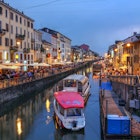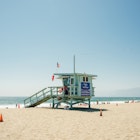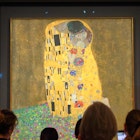
Jun 13, 2025 • 8 min read
The Fourth of July is one of America's most festive holidays. Here are the best places to celebrate.

Jun 13, 2025 • 8 min read
The Fourth of July is one of America's most festive holidays. Here are the best places to celebrate.

Jun 13, 2025 • 9 min read
This eclectic itinerary takes art lovers on a fascinating spin around eastern Normandy, sampling fine art locations, fresh seafood and historic sites.

Jun 13, 2025 • 7 min read
Rolling forests, saw-toothed mountains, bridges spanning river gorges - these are the 10 most spectacular train journeys in Europe.

Jun 13, 2025 • 9 min read
The Golden State is known for its wealth of golden sands. Start planning your visit now with our list of the top 11 best beaches in California.

Jun 13, 2025 • 6 min read
Portugal has a vast coastline with many sun-kissed beaches. The choice can be overwhelming, so why not start with 11 of our absolute favorites? Dive in.

Jun 13, 2025 • 7 min read
Milan may be Italy's most expensive city but its many free attractions are easy on your wallet.

Jun 13, 2025 • 10 min read
Every corner of the city treats visitors to a new sensation – these are all the best things to do in New Orleans.

Jun 13, 2025 • 8 min read
From among Europe’s tens of thousands of miles of coastline, we’ve selected 20 of the best beaches all over the continent.

Jun 13, 2025 • 6 min read
Here’s everything you need to know about the tomato-throwing extravaganza that takes place every August in Spain.

Jun 13, 2025 • 18 min read
From the Caribbean to the Pacific Northwest and beyond, Lonely Planet editors have picked the 23 best beaches in the US.

Jun 13, 2025 • 13 min read
If you want to get to know Virginia, these are the best places to visit to get to know the birthplace of the USA.

Jun 13, 2025 • 21 min read
From fabled golden bays to little-known coves, these are the best beaches in the world.

Jun 13, 2025 • 14 min read
Looking for a walk with drama, bragging rights and epic coastal scenery? Try this two-week walking itinerary along Wales' Pembrokeshire Coast Path.

Jun 13, 2025 • 9 min read
Viewpoints, street art, architecture and gardens: there's plenty to experience for free in Lisbon.

Jun 13, 2025 • 7 min read
If you're among the throngs of tourists visiting New York City this summer, navigate the five boroughs armed with these helpful dos and don'ts.

Jun 13, 2025 • 4 min read
Vienna is one of the greenest cities in the world, with enchanting woods and marvelous vineyards. Here's our guide to the city's finest parks.

Jun 13, 2025 • 6 min read
Poland is a big country packed with incredible landscapes and beautiful cities. Here's our first-time guide to Poland.

Jun 13, 2025 • 9 min read
Here's everything you need to know about hiking up Pen-y-Fan, the tallest peak in Brecon Beacons National Park and one of Wales' wildest walks.

Jun 12, 2025 • 9 min read
Explore the best of Nova Scotia's remarkable history and scenery with this road trip from Halifax to Fortress of Louisbourg.

Jun 12, 2025 • 7 min read
You can waltz through museums in Austria's capital for weeks on end and barely scratch the gilded surface of its vast collections.

Jun 12, 2025 • 6 min read
Let a few locals share their fave vacation spots in England. Here's a list from our savvy insiders.

Jun 12, 2025 • 4 min read
Local writers share their favorite lesser-visited destinations for their vacations in Greece.